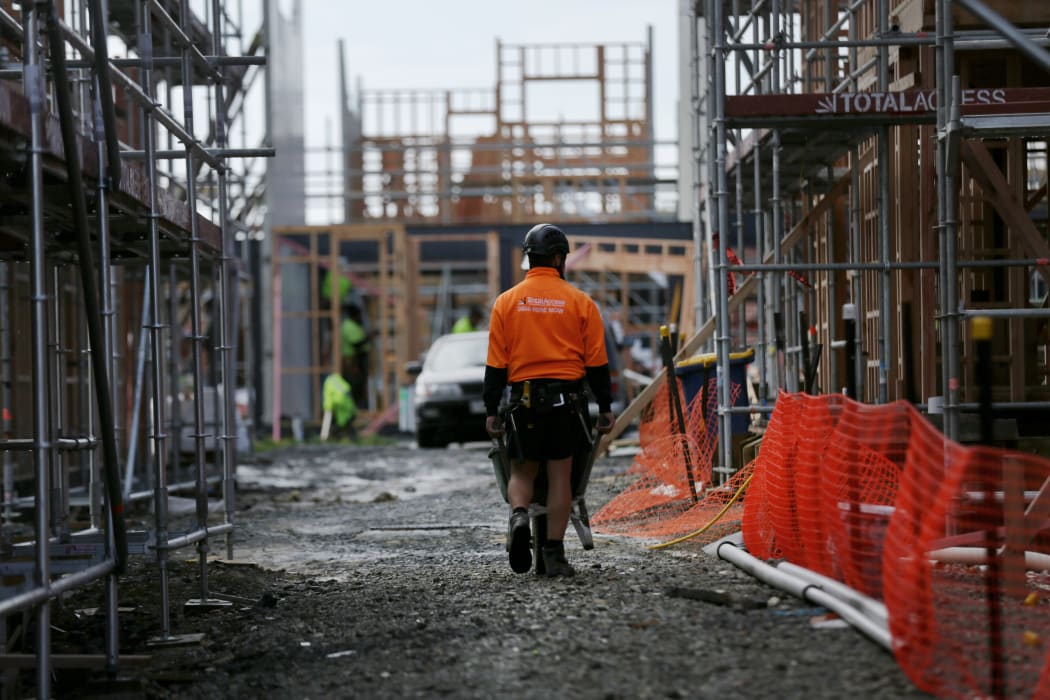The government should take the lead in forcing down the cost of building materials, the chair of Business New Zealand says.
In some cases materials in New Zealand can be double the cost as they are overseas.

Photo: RNZ / Rebecca Parsons-King
The New Zealand building industry is too fragmented to challenge a monopoly of big suppliers and it’s time our government took the lead to force prices down, says Tony Sewell.
“Our main contractors in the housing market are just too small. Take somewhere like Auckland, there are 400 small builders trying to solve a huge 10,000-house shortage and they’ll never get there.
“There are four major house builders in Adelaide, we’ve got 400 in Auckland — a city of the same size.”
Mr Sewell was previously head of Ngai Tahu Property and travelled to the United States in 2013 to investigate how they built cheaper.
He found the cost of basic building materials such as timber and electrical fittings in the US was sometimes up to three times cheaper than in New Zealand.
Ngai Tahu Property estimated the cost of building an affordable home in New Zealand - at that time – as about $1,500 per square metre. American developers said the cost there was about $600.
“We were quite shocked at what we saw. Systems over there, their supply chains, were much shorter than ours and the cost of their materials was significantly lower than ours, so we started asking why.”

Tony Sewell Photo: Ngai Tahu Property
In the worst cases materials were 100 percent dearer here because our supply chain is so inefficient, he says.
“If you get a supplier of a product from offshore and it goes to New Zealand you have an importer, a distributor, a supplier, a subcontractor and a main contractor before the customer actually buys it, and that’s probably adding at least 50 percent to margin.”
If that never changes then costs here will always be high, he says.
“If we’re going to accept that’s the nature of our building industry; we’re going to have to accept that were going to pay a fortune for our housing.”
Under-capitalisation is also a drag on housing supply, he says, because small operators need credit suppliers down the chain to operate.
“If you went out to build 20 houses you’d probably need about $8 million to $10 million capital. The average small builder has nothing like that, therefore he has no scale.
“There is no encouragement from either the Master Builders or anybody else to do anything about it. There are just like possums with their eyes in the headlights.”
He says as a major customer, the government should show leadership and insist on only dealing with major suppliers and should also bring in a simpler product approval regime.
“They can start a knock-for-knock approvals process. If a product is approved in England, Australia and America it should be approved here, but it’s not.
“Are we that arrogant that we think there’s something special about building here that’s different to building in California? They have the same earthquake conditions we have.”

